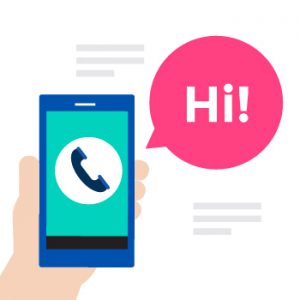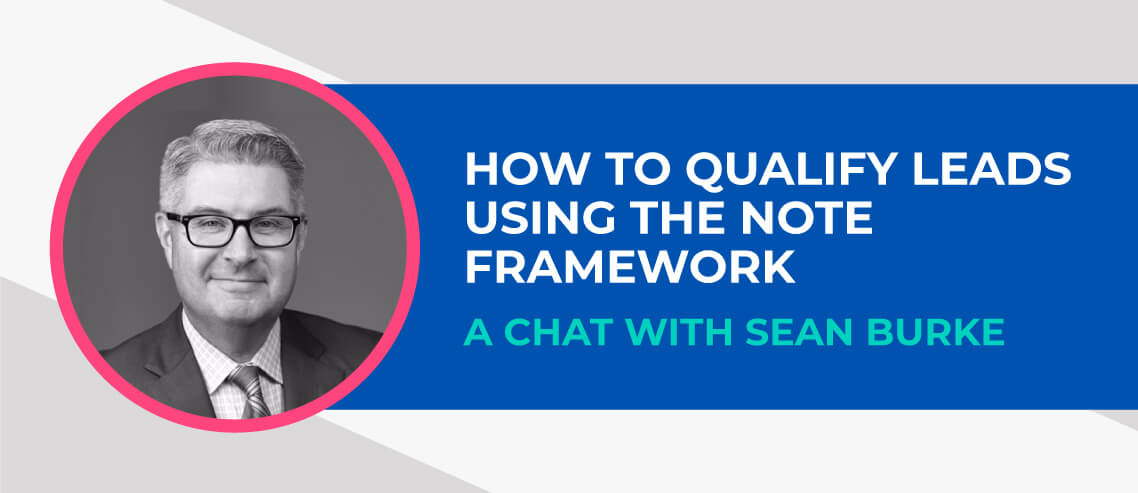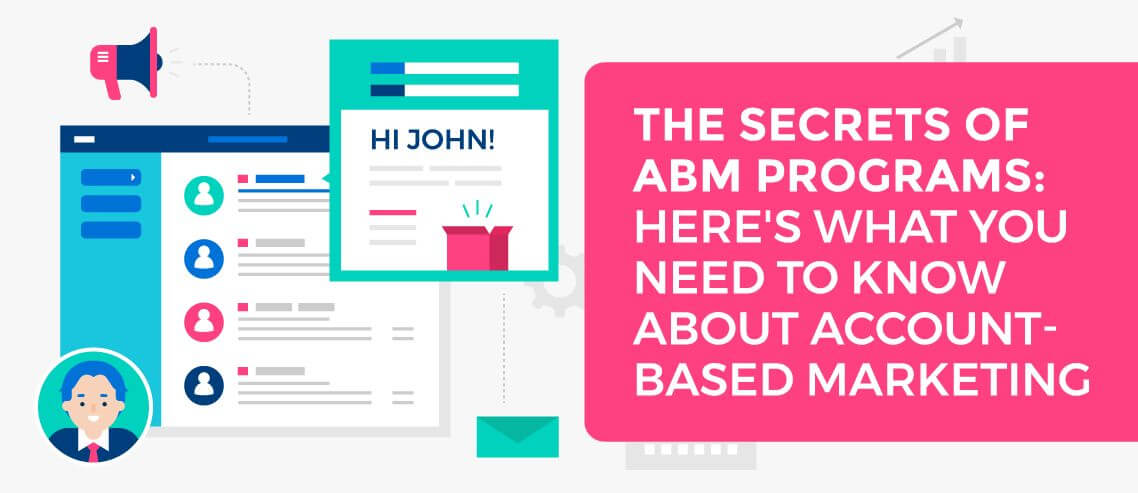Ditch Your Script, Use These Cold Calling Techniques Instead

Contents
“Cold calling is dead!”
I’m tired of hearing this argument — largely because the argument is between salespeople and “sales gurus,” when what our prospects think about cold calling is far more important than what we salespeople think.
The problem isn’t that cold calling is dead. It’s that reps aren’t learning the cold calling techniques that will help them succeed. So they’re giving up.
But statistics confirm that cold calling is alive and well. It’s even a welcome form of communication — when you do it right.
When surveyed, 82% of B2B buyers said they accepted meetings from salespeople who reached out to them in the last 12 months. And 69% of buyers accepted cold calls from new providers.
The RAIN Group also found that top performers earned the lion’s share of results, generating 2.7x more meetings than the rest of their team.
Let’s stop the cold calling debate.
Let’s focus instead on what prospects want from a cold call, and what top performers are doing differently than the rest of the pack.
In this article, I’m going to give you three cold calling techniques that do just that. But first, let’s look at why this is so important.
Put Yourself in the Prospect’s Shoes
Companies like Google, HBO, and Apple are creating world-class products because they spend millions of dollars on user research.
They know how their users think, what they want, and what their motivations are.
This is part of an approach called design thinking, and empathy is the first step in the process.
We can apply this same thinking by adopting an empathy-based approach to prospecting.
Think about the prospect’s experience on the receiving end of a cold call. Most of the time, prospects pick up calls from unknown numbers because they think you’re someone else. And let’s be real, the experience of talking to salespeople on cold calls isn’t always a pleasant one.
Many prospects complain that:
- The salesperson sounds like they’re reading a script instead of having a conversation
- The rep talks the entire time
- They’re interrogated with half a dozen qualifying questions
Where you can adopt an empathy-based approach is by doing the opposite:
- Be conversational and show the prospect you did your research, not that you memorized a script
- Engage the prospect so they feel like they’re participating in a conversation
- Ask conversational, thought-provoking questions so the prospect doesn’t feel like they’re being interviewed or interrogated
Your job when making cold calls is to be different. And it might sound crazy, but being more human is a differentiator these days.
RELATED: 7 Sales Soft Skills That Can Turn Average Sales Reps into One Percenters
Use these three cold calling techniques to interrupt the normal pattern of what prospects experience on the receiving end of cold calls:
- Get your tonality right
- Be creative with your opener
- Stack your questions
Get your tonality right
Dr. Albert Mehrabian came up with a principle you may have heard of called the 7-38-55 Rule of Personal Communication:
- 7% of your communication is through spoken word
- 38% is your voice and tone
- 55% is your body language
The prospect can’t see your body language over the phone, so most salespeople conclude that 93% of your communication must be tonality. And 7% is what you say.
Unfortunately, it’s not as easy that. It’s a terrible interpretation of the study, which has been debunked several times.
What you say is also important.
The point is that tonality is a big part of cold calling, but it isn’t everything. Don’t stress out too much about improving your tonality.
If you’re in sales, odds are that your tonality is pretty good. But for whatever reason, it doesn’t come out in our cold calls.
Shift your focus away from improving your tonality. Instead, put yourself in a mental and physical state that allows your tonality to come out in a way that’s natural and authentic.
Let’s look at some practical ways to do this.
Change your mindset
Our prospecting philosophy is, “Don’t prospect to make a sale. Prospect to start a conversation.”
Stop selling when you’re prospecting. Shift your focus from “how can I sell to this person?” to “how can I help this person?”
When you want to help, your tonality naturally shifts. You’re curious, instead of assumptive.
Let curiosity drive the conversation.
The cold call is an opportunity to learn more about the prospect to see if you can help them.
Let this mindset be the foundation for your prospecting approach.
RELATED: How to Be a Better Salesperson Through Relationship Selling
Here are a few more tips:
Think about the times when you have the most social energy. For one of our clients, it’s when he’s at the Crossfit gym with his friends. Channel that feeling before your next cold call. This technique is called Imagery Training, it works really well if you practice.
Bring it back to your why. Every prospect you interact with (including assistants) could be the ticket to your next big deal. Show up. Be present. Make a great first impression.
Remind yourself that what you’re selling adds value. Think back to all the customers you’ve helped over the years. Talk to customer success about the results your product is creating for your customers.
Put your favorite music on. This is my go-to. For me, it’s 80s rock and 90s hip-hop. Morgan Ingram put together a Keep Dialing playlist you can check out as well. Put your favorite pump-up jams in a playlist to get your mind right.
Physicality drives tonality

Your physical state affects your mental state.
In one particular study, researchers split a group of people in half. One half had a slumped over posture, and the other sat straight up.
Then they put the participants through a series of comprehension and stress tests. They measured their heart rate and blood pressure to monitor their stress levels.
The study concluded that “adopting an upright seated posture in the face of stress can maintain self-esteem, reduce negative mood, and increase positive mood compared to a slumped posture.”
Simply sitting with good posture can put you in a better mood. And prospects will hear that on the other end of the phone.
Try these tips:
- Stand up or sit straight up on the edge of your chair when you’re making calls.
- Go for a quick 5-minute walk before your call blitzes to get your blood flowing.
- Smile when you talk. Keep a small mirror at your desk you can look at.
- Grab a coffee in the morning before you start working. Your goal is to be social. Challenge yourself to make the barista and one person standing in line smile by saying hi and asking how their morning is going.
Implement These Cold Calling Techniques Now:
Try one technique from above on your next 10 cold calls.
Be Creative With Your Opener

I’m sure you’ve heard at some point that our attention span is about the same as a goldfish. Or that it’s dropped from 12 seconds to 8 seconds since 2000.
Well, that’s another misrepresented study.
Our attention spans are task-dependent, meaning it depends on the task we’re performing. Our role in that task (e.g., watching a lecture vs. giving a lecture) plays a big factor in our ability to pay attention.
How does this apply to your cold call opener?
You have more time than you think.
Sure, you need to grab the prospect’s attention quickly at the beginning of the call. But opening with your product pitch isn’t the best way to do that.
RELATED: 8 Cold Calling Tips to Boost Your Success Rate (& Keep It Fun)
You grab the prospect’s attention by using an unconventional opener.
Successful cold calls are close to twice the duration of unsuccessful cold calls. Your goal in the first few seconds of a cold call is to buy time.
Start your cold call out like this:
“Hey [first name], this is [your name] with [company].”
Then use one of these 10 openers. (The company or person mentioned with each opener is who popularized it. They may not be the creator.)
? “How’ve you been?” Gong.io (best opening line according to their study)
? “Thanks for taking my call, do you have a couple of minutes?” John Barrows, founder at JBarrows Consulting
? “I know you weren’t expecting my call. Do you have 27 seconds to…” ConnectAndSell
? “If I told you this was a cold call, would you want to hang up? Or would you give me time to tell you why I’ve called today?” Richard Smith, co-founder at Refract
? “Calling to introduce myself, and see if what we do might be useful to you in the future. How’s my timing?” John Klymshyn, found at the Business Generator
? “I was really hoping to speak with you briefly. Do you have two minutes?” Tito Bohrt, CRO/CEO at Altisales
? “I’m the guy/gal who sent you [reference email/direct mail piece].” Outreach.io
? “Did I catch you at a bad time?” Christopher Voss / Aaron Ross
? “You and I haven’t spoken before, but the reason for my call is…” Jamie Carlson, SDR at athenahealth
I wrote a post on LinkedIn asking people about their favorite cold call openers if you want more. Over 200 salespeople responded with their thoughts.
Or you can get creative and come up with your own.
Avoid using these generic openers:
- “How are you?”
- “How are you doing?”
- “How are you today?”
- “How’s your day been so far?”
- Going straight to your 15–30 second pitch
Implement These Cold Calling Techniques Now:
- Try one new opener for your next 10 cold calls
Question Stacking

In Chorus.ai’s study of 5 million+ sales calls, they found that the most successful reps talk 40–50% of the time in their cold calls. They also ask four questions, including 2–3 engaging questions that solicit responses of 30 seconds or more.
Now if you look at Gong.io’s data, it conflicts slightly with those numbers. Their studies show that successful reps talk 54% of the time. And there was no difference in the number of questions successful vs. unsuccessful reps asked.
Here’s what you can take away from this:
- You and the prospect should roughly split the talk time. It won’t be perfect, but avoid dominating the entire conversation.
- You only have time to ask a few well-thought-out questions. Make it count.
We teach our clients a method called question stacking.
Let’s look at an example.
Your company has a product that automates bookkeeping. Manually doing their own bookkeeping and account reconciliation through spreadsheets and multiple platforms are the biggest frustrations for most of your users.
In a cold call, you want to know if they’re using multiple tools for their bookkeeping because that’s where you can potentially help.
“Many small business owners spend a few hours every week using tools like PayPal, Stripe, and spreadsheets to manually do their bookkeeping. I’m curious. How are you handling bookkeeping at ABC Company?”
The first sentence provides context to the question in the second sentence. If you asked the second question without providing context, you’re much more likely to get a generic response that doesn’t give you the answer you need to set an appointment.
It’s a simple formula for asking questions that looks like this:
[context]. [question]?
RELATED: 8 Questions to Ask on a Sales Discovery Call to Qualify Leads
Here’s how to come up with your own questions:
Figure out what you need from the prospect. What requirements need to be met in order to have a quality sales conversation? It could be tech stack requirements or the number of employees they have in a particular department.
Examples:
“Many sales teams are using Salesforce these days. What tools do you guys use?”
“Many of the small business owners I talk to are using Quickbooks for their bookkeeping. What are you guys using?”
“Many of the sales teams I talk to are using sales engagement tools like Mailshake or Outreach.io to run their outbound cadences. What are you guys using?”
Look at your notes from previous sales calls. Take a look at the notes or listen to the recordings from your past cold calls and discovery calls. What pain points did prospects share with you? If you don’t have anything good here, pay closer attention during the calls you make moving forward. Write down, word for word, exactly what your prospects say when they’re sharing their pain points.
Examples:
“One thing I hear from delivery teams is that they’re short on staff when it comes to MIM, Active Directory, or Office 365 expertise. How do you guys staff for these types of skill sets?”
“Personalization at scale is what many sales teams are trying to do in their cold outreach right now, but many sales directors are worried about how long it takes. How do you guys approach personalization?”
“Getting in touch with decision-makers at companies your nonprofit doesn’t have a personal relationship with can be challenging. I’m curious, how do you guys approach companies you want to partner with?”
Examine existing customers. What are the top three areas where your product/service helps your customers the most? Take note of the value you provide them. This is a good opportunity to collaborate with your product or delivery team.
Examples:
“One thing business owners tell me they really want is to spend less time working with spreadsheets and multiple software platforms when they’re doing their bookkeeping. I’m curious about how you guys handle your bookkeeping?”
“A trend that’s big with prospecting right now is using tools like video and LinkedIn to set more appointments. I’m curious about how you guys are using those tools to fill your pipeline?”
“Many HR teams are looking for ways to spend less time manually tracking their performance management. I’m curious about how you guys are using automation to better track and save time with your employee check-ins?”
Implement These Cold Calling Techniques Now:
- Create one new question you can ask in your next 10 cold calls
Now get after it!
Empathy is key when cold calling. Most things will take care of themselves if you step outside the sales bubble, and focus more on your prospects.
Put yourself in their shoes. Familiarize yourself with their goals and challenges.
Get yourself in a good physical and mental state so your tonality naturally improves.
Grab your prospect’s attention using non-conventional openers in your calls.
And stack your questions so prospects have the context they need to provide insights into their situation.
What other cold calling techniques are making a difference in your success rate? Share your tip in the comments.





